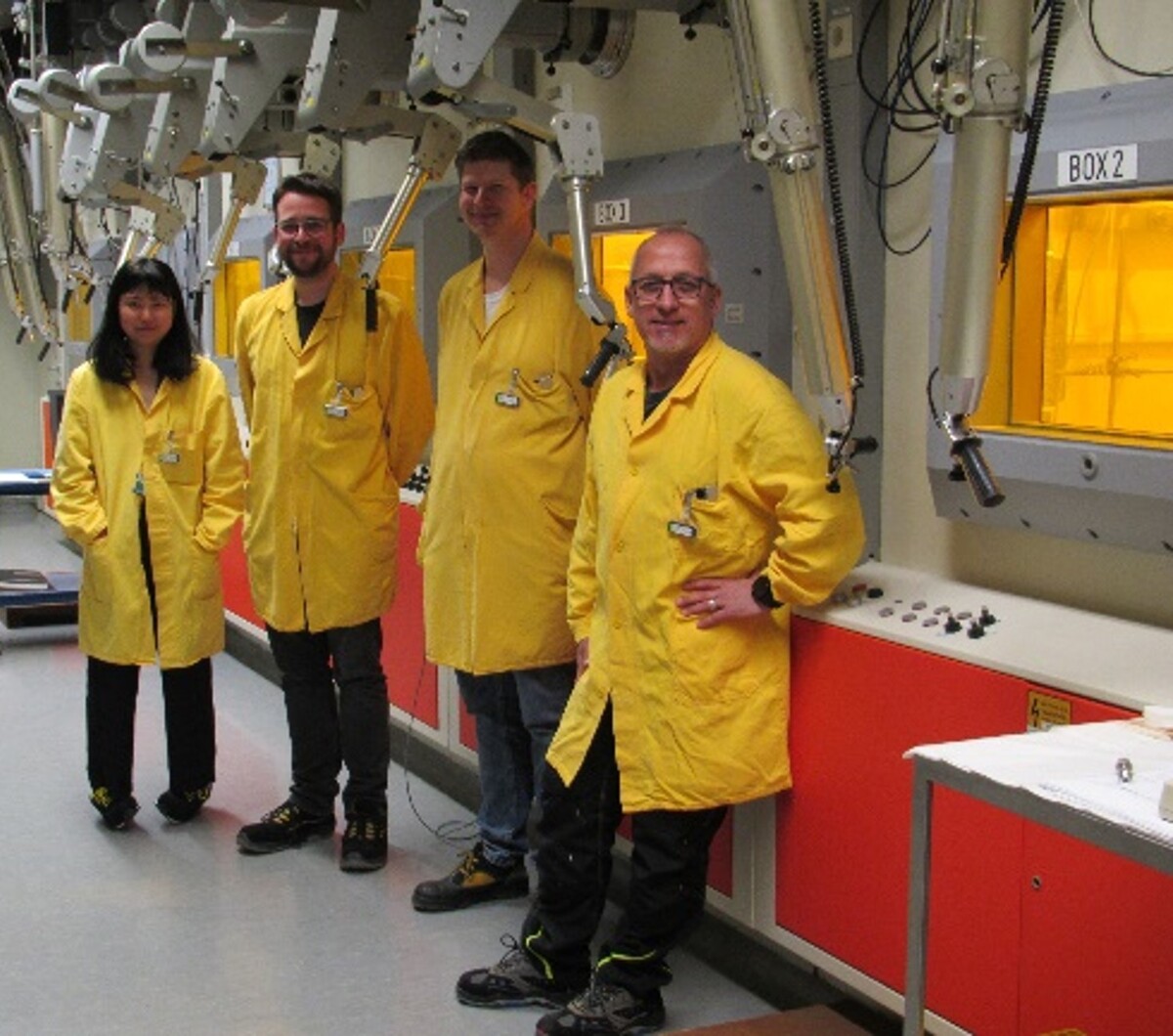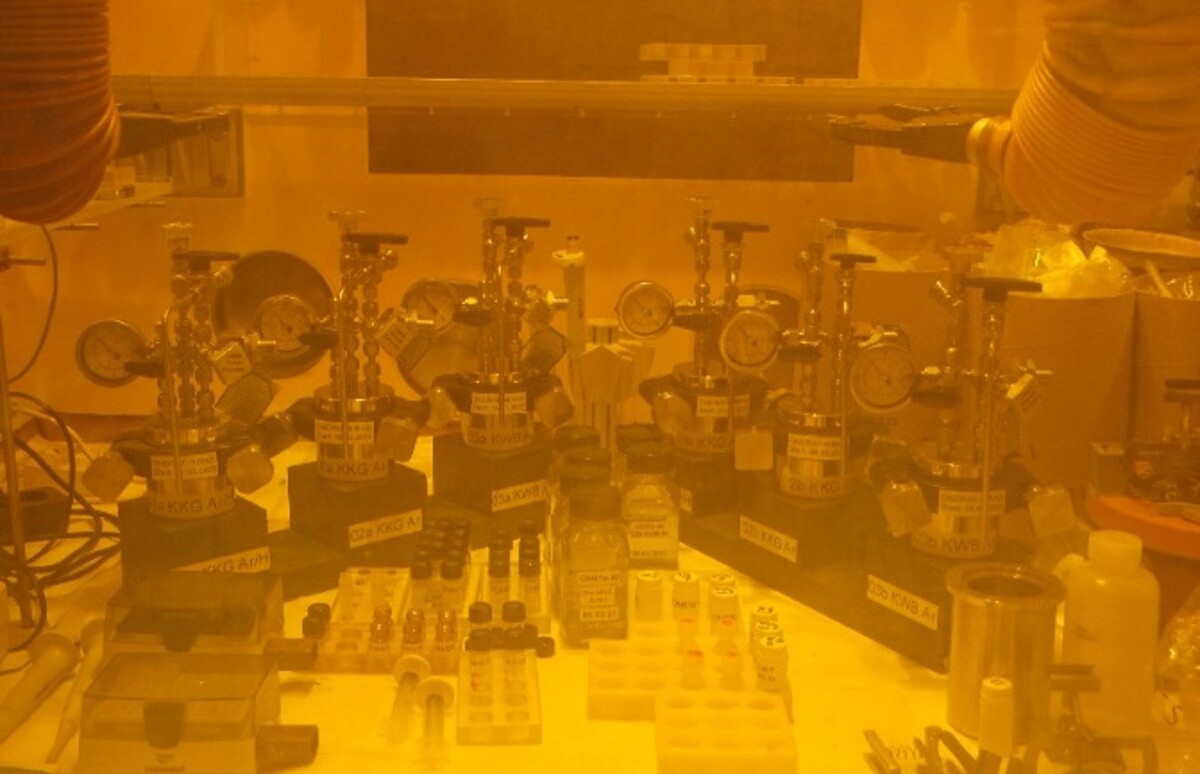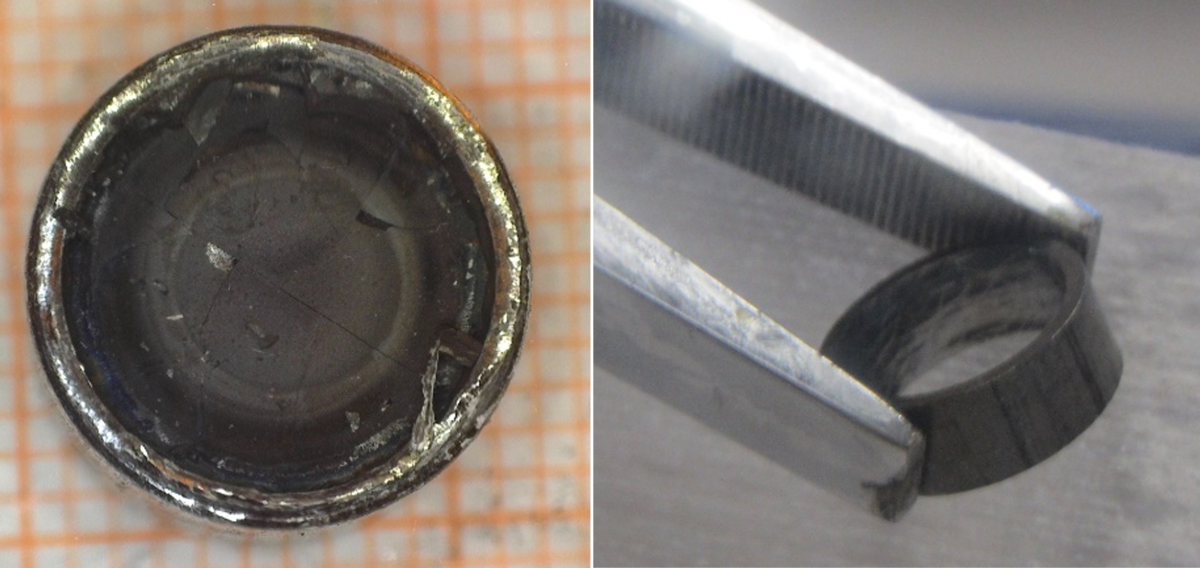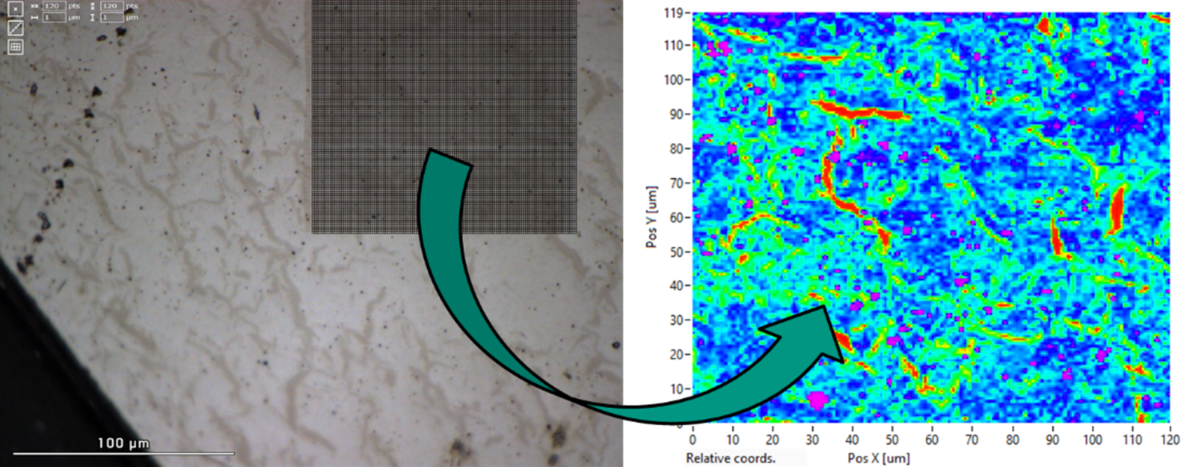Highly radioactive waste forms
Our research deals with the stability of highly radioactive waste such as spent nuclear fuel, HLW glass and activated fuel rod cladding tubes in the context of prolonged dry interim storage of irradiated fuel elements and the long-term safety of a repository for highly radioactive waste in deep geological formations.
In the case of extended dry interim storage, the integrity of the cladding tubes must be ensured over the entire storage period to enable the fuel assemblies to be safely conditioned for final disposal. With regard to the post-closure safety analysis of a deep geological repository, profound knowledge of the interactions of intruding formation- / groundwater with the emplaced high-level radioactive waste is indispensable in order to draw conclusions about the release behavior of radionuclides from the waste form.
For this purpose, the group uses a laboratory infrastructure that is unique in the German research landscape, namely the shielded box line (ABL). The ABL enables the handling, preparation and experimentation with highly radioactive samples by means of remote handling. The ABL is also equipped with various spectroscopy and measurement devices such as an optical microscope, Raman video probes and a laser scan micrometer.
Current investigations are concerned with
- understanding the chemical and mechanical degradation mechanisms of fuel rod cladding tubes under dry interim storage conditions;
- the process understanding of the mobilization and retention of radionuclides from highly radioactive waste forms under repository-relevant conditions;
- the determination of the radionuclide inventory of studied HLW samples.
The work includes a large number of experimental studies on the behavior of highly radioactive waste products under interim and final storage conditions. For example, various spectroscopic methods and (nano-)mechanical test methods are used to investigate the integrity of cladding tubes during prolonged dry interim storage.
Radionuclide inventory determinations or leaching experiments with spent nuclear fuel and HLW glasses under deep geological repository conditions in various synthetic groundwaters allow the investigation of radionuclide release from such waste products and the derivation of release mechanisms. The experimental work is complemented by theoretical calculations of the radionuclide inventory in the above-mentioned waste forms.
Our work is integrated into national and international collaborations and projects, and scientific results are considered in safety analyses, the validation of computer codes and the development of safety concepts.
In addition, the group is involved in the operation, maintenance and (experimental) development of the ABL.
Contact:
|
+49 721 608 24387 |




